Navigate tales of Biblical bullies, from Goliath's taunts to Jezebel's schemes, uncovering ancient insights into power and intimidation.
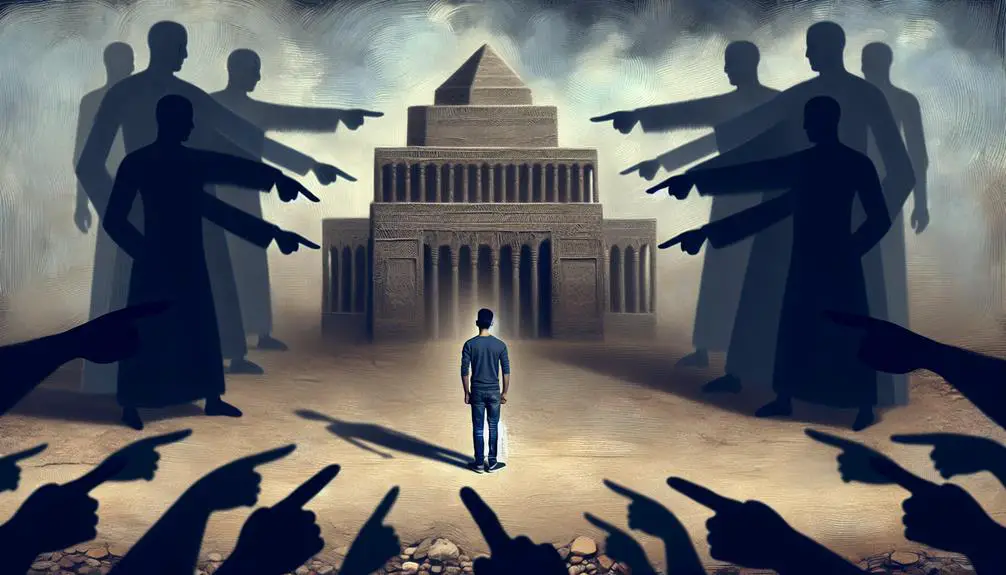
Bullies in the Bible
Consider Goliath's defiance, towering over his adversaries, taunting the Israelite army with a mix of physical might and psychological warfare. You've likely heard this story, but have you ever thought of Goliath as more than just a giant adversary, perhaps as a bully wielding his power to intimidate?
This perspective opens up a broader conversation about the nature of bullying throughout the Bible, from Pharaoh's oppression to Jezebel's manipulations. Each story offers a unique lens through which to examine power dynamics and human behavior.
Let's explore these narratives together, uncovering insights that might resonate with today's struggles against bullying.
Key Takeaways
- Biblical narratives showcase bullying through physical intimidation, as seen with Goliath and Pharaoh.
- Characters like Jezebel and Haman highlight the destructive power of deceit and manipulation.
- Stories of Nebuchadnezzar and Haman demonstrate how arrogance can lead to one's downfall.
- Figures such as Mordecai and David embody the courage to defy bullies and stand up for justice.
Goliath's Defiance

Goliath's defiance against the Israelite army serves as a pivotal example of antagonism and challenge in biblical narratives. His towering presence and scornful demeanor embody the archetype of a bully, leveraging physical might to intimidate and coerce. Goliath's taunts, hurled towards the Israelites, aren't merely verbal assaults but strategic psychological warfare intended to demoralize and paralyze his opponents with fear. This scenario encapsulates the classic confrontation between underdog and titan, a theme recurrent throughout various traditions and stories.
David's valor, in contrast, emerges not from a posture of brute strength but from a profound sense of faith and moral conviction. His decision to confront Goliath, armed with nothing but a sling and his faith, underscores a critical narrative turn where courage and cleverness are valorized over sheer force. David's approach to battle, marked by a reliance on skill and divine support, offers a stark counter-narrative to Goliath's reliance on physical intimidation and strength.
The confrontation between David and Goliath transcends a mere physical battle; it represents the triumph of righteousness and moral fortitude over arrogance and might. Goliath's taunts, intended to weaken his adversaries, ultimately serve to highlight David's unwavering faith and courage, setting the stage for an unexpected victory that reshapes the moral landscape of the narrative.
This episode invites readers to reflect on the nature of true strength and valor, suggesting that courage, faith, and intellect can prevail over brute force and intimidation. It's a compelling testament to the power of belief and the potency of the underdog in the face of seemingly insurmountable odds.
Pharaoh's Oppression
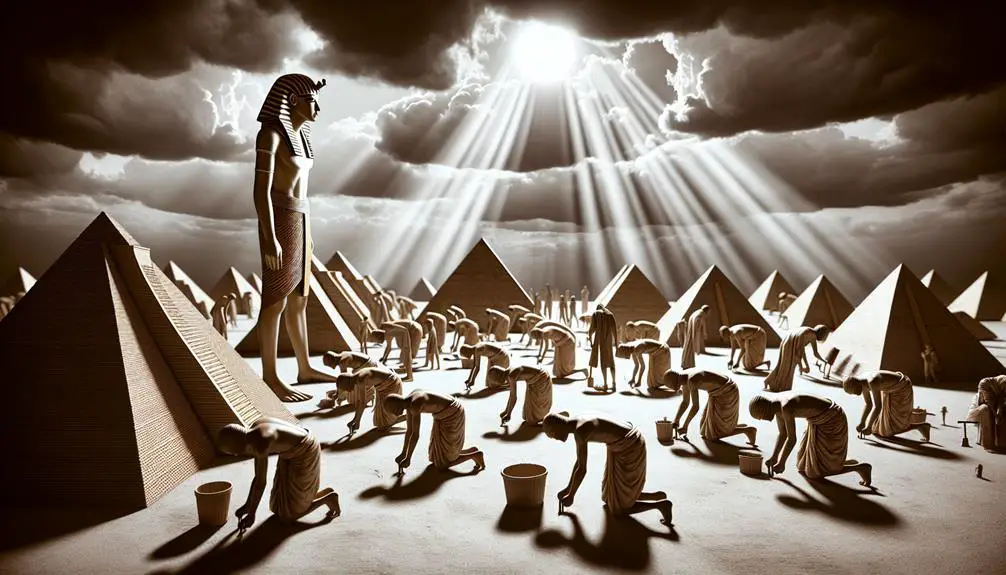
In the biblical narrative, Pharaoh's relentless subjugation of the Israelites epitomizes the cruel exertion of power, serving as a stark illustration of oppression and its profound impacts on the human spirit. This episode, set against the backdrop of Egyptian slavery, not only highlights the Israelites' physical suffering but also underscores the psychological toll of enduring such relentless hardship. It's a potent reminder of how institutionalized oppression can dehumanize and demoralize entire communities.
Central to this narrative is Moses' leadership, which emerges as a beacon of hope and defiance against Pharaoh's tyranny. His role is pivotal in transforming the Israelites' journey from one of despair to emancipation, underscoring the potential for resistance and liberation even in the most oppressive circumstances. Moses' confrontations with Pharaoh are emblematic of the struggle between the oppressed and their oppressors, showcasing the resilience of the human spirit in the face of seemingly insurmountable odds.
Pharaoh's oppression, therefore, serves not only as a historical account of Egyptian slavery but also as a timeless lesson on the dynamics of power, resistance, and liberation. It invites a scholarly examination of how leadership and community solidarity can challenge systemic injustice, offering insights that resonate far beyond the ancient context. Through Moses' leadership, the narrative of Egyptian slavery becomes a testament to the enduring human capacity to overcome oppression and reclaim dignity and freedom. This story, while ancient, continues to inspire those who seek to understand the complexities of power and resistance in their quest for justice and equity in contemporary contexts.
Jezebel's Manipulations
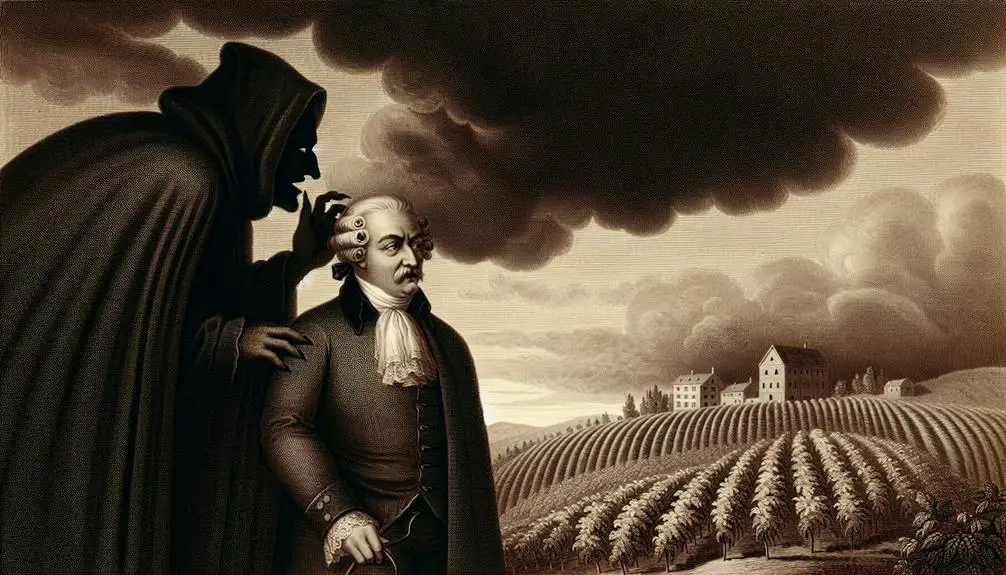
Turning our attention to another form of biblical bullying, Jezebel's manipulations starkly illustrate the destructive power of deceit and coercion in achieving personal and political ends. Jezebel's idolatry, deeply rooted in her Phoenician heritage, not only clashes with the monotheistic beliefs of Israel but also serves as a fulcrum for her manipulative endeavors. Her marriage to Ahab, the king of Israel, isn't just a political alliance; it becomes a tool for introducing Baal worship into Israel, undermining the religious foundations of the nation.
Jezebel's manipulative tactics extend beyond religious imposition. Her notorious involvement in the Naboth vineyard episode showcases a chilling proficiency in manipulation. She crafts a nefarious plot that leads to Naboth's unjust execution, all to secure a trivial piece of land for Ahab. This act of bullying, underpinned by deceit and murder, highlights her ruthless ambition and disregard for justice or moral integrity.
Ahab's complicity in Jezebel's schemes can't be overlooked. His passive acceptance of her actions, driven perhaps by love, fear, or a combination of both, effectively enables her bullying. This complicity raises questions about power dynamics in their relationship and the broader implications for the moral and spiritual decline of Israel.
Analyzing Jezebel's manipulations offers profound insights into the nature of bullying. Her actions demonstrate how deceit and coercion can corrupt leadership, subvert justice, and erode the moral fabric of a community. The biblical narrative, in exposing her tactics, warns against the dangers of complicity and underscores the importance of integrity and moral courage in leadership.
Nebuchadnezzar's Arrogance
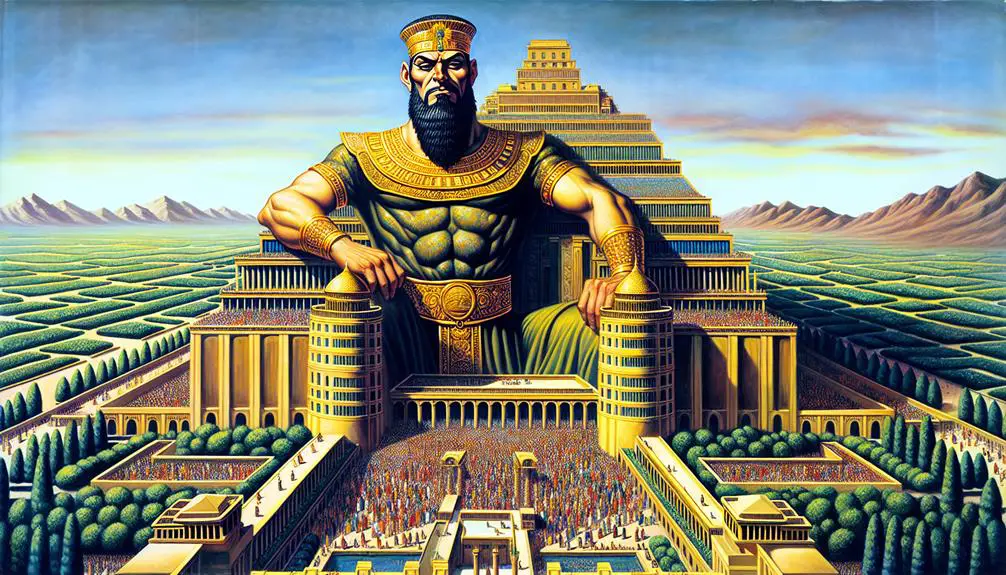
Nebuchadnezzar's arrogance, often overshadowing his achievements, serves as a pivotal example of how excessive pride can lead to moral and ethical downfall. As a ruler of the Babylonian empire, his story is marked by moments of profound self-aggrandizement, which ultimately challenge his reign and personal integrity. His reliance on dream interpretation is a key aspect of his rule, yet it also highlights his vulnerabilities and the precarious balance of power and pride.
- Demand for Unreasonable Dream Interpretation: Nebuchadnezzar's insistence that his wise men not only interpret his dream but also tell him the dream itself, without any clues, showcases his unreasonable expectations and inflated sense of power.
- Creation of the Golden Image: His command to erect a giant statue for worship reflects his desire for divine status among his subjects, pushing the boundaries of his authority and challenging the religious convictions of his people.
- Fiery Furnace Incident: The punishment of Shadrach, Meshach, and Abednego for not worshiping the statue demonstrates his intolerance and the extreme measures he was willing to take to enforce loyalty.
- Boasting of Babylonian Achievements: His proclamation of Babylon's greatness as his personal achievement reveals a deep-seated pride and detachment from the contributions of others.
- Divine Humiliation: His eventual humbling by divine intervention, where he experiences madness and lives as an animal, underscores the consequences of his arrogance, serving as a cautionary tale about the dangers of excessive pride.
Nebuchadnezzar's story within the context of the Babylonian empire offers a rich narrative on the complexities of leadership, the pitfalls of arrogance, and the significance of humility and accountability.
Haman's Plot
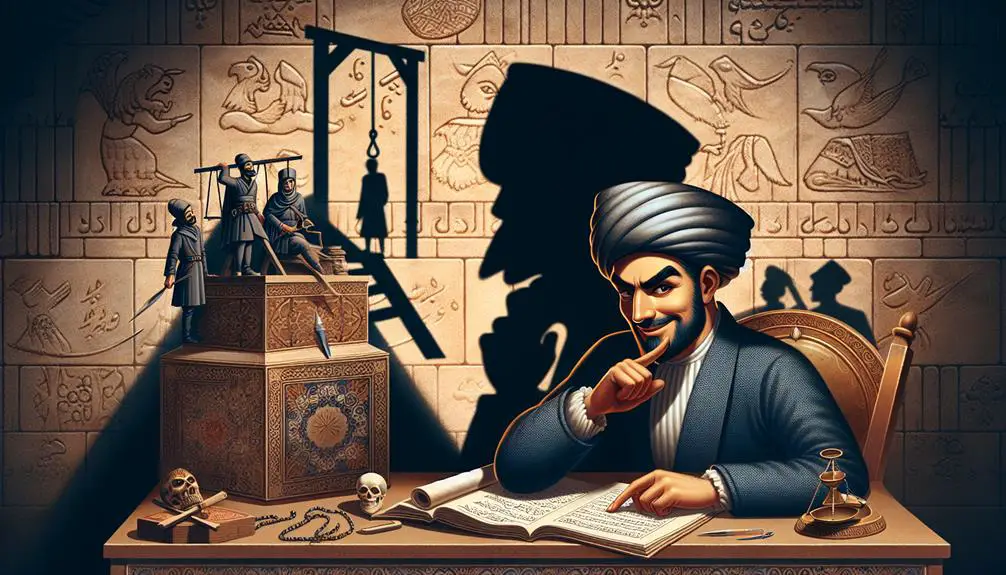
You'll find that Haman's plot within the biblical narrative is a vivid portrayal of malicious intent fueled by personal vendetta. His deep-seated hatred for Mordecai not only reveals his character but also sets the stage for a dramatic showdown, highlighting Mordecai's refusal to bow to Haman's authority.
The construction of the gallows serves as a stark symbol of Haman's plans for revenge, encapsulating the extreme measures he was willing to take.
Haman's Hatred Explained
In an analysis of Haman's plot, one must recognize that his deep-seated hatred for Mordecai wasn't merely personal but also rooted in a broader animosity towards the Jewish people. This hostility was intertwined with Persian politics and was a threat that required Esther's courage to confront.
- Haman's animosity was exacerbated by Mordecai's refusal to bow, challenging Persian societal norms.
- His plot leveraged the apparatus of Persian politics to legitimize his genocidal intent.
- Esther's courage was pivotal in exposing and countering Haman's plan.
- The narrative underscores the dangers of unchecked power and prejudice.
- It also highlights the critical role of individuals in challenging systemic injustices.
Understanding Haman's hatred within this context is essential for appreciating the complex interplay of personal vendetta and broad societal issues.
Mordecai's Defiant Stance
At the heart of Haman's plot against the Jewish people was Mordecai's refusal to bow, a defiant act that challenged not only personal but also societal expectations in Persian culture. This bold stance is a pivotal moment, showcasing the complexities of Persian politics and the courage rooted in faith and identity. Mordecai's actions set the stage for Esther's bravery, highlighting the intertwining of personal defiance and political intrigue.
Aspect |
Impact |
|---|---|
Mordecai's Act |
Challenged societal norms |
Persian Politics |
Became a backdrop for conflict |
Esther's Bravery |
Emerged in response to Mordecai's stance |
Plot Development |
Accelerated due to the defiance |
This analysis underscores the significance of individual actions within broader political and societal contexts, illuminating the layers of resistance and courage depicted in this biblical narrative.
The Gallows' Intended Purpose
Haman's construction of the gallows was a calculated move, designed specifically for Mordecai's execution, which reveals the depth of his personal vendetta within the broader plot against the Jewish community. This act, steeped in historical context, serves as a chilling reminder of how personal grievances can escalate into large-scale persecutions, offering modern parallels in the dynamics of power and prejudice.
- Insight into Personal Vendetta: Haman's animosity towards Mordecai.
- Symbol of Persecution: Gallows as a tool of terror.
- Historical Context: Reflecting ancient practices of execution.
- Modern Parallels: Lessons in contemporary issues of hate and intolerance.
- Broader Plot: The gallows' role within the larger scheme against the Jews.
This analysis underscores the importance of understanding history to recognize and combat similar patterns of hostility in today's world.
Nabal's Insolence
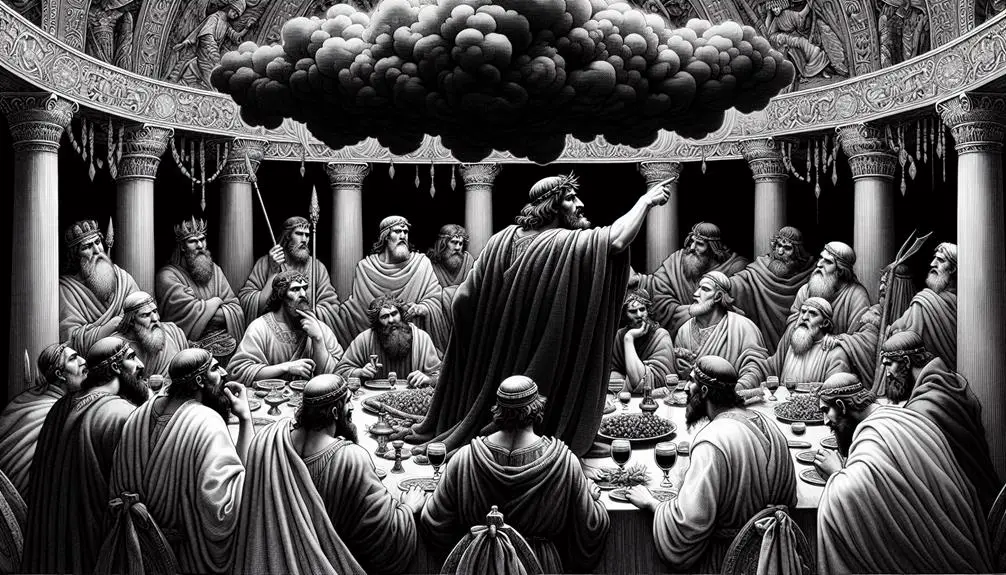
You'll find that Nabal's harsh refusal to assist David, despite the protection previously given to his flock, epitomizes insolence and sets the stage for a significant conflict.
David's planned response, a direct outcome of Nabal's actions, highlights the potential for escalation when addressing perceived slights.
This incident underscores the complexities of interpersonal relationships and the consequences of prideful behavior in biblical narratives.
Nabal's Harsh Refusal
Nabal's harsh refusal to aid David, despite the protection David's men had provided, exemplifies a notable instance of insolence within the biblical narrative. This act of defiance sets the stage for critical interventions and decisions, notably Abigail's intervention and David's restraint, which underscore the complexities of human interactions and moral choices in the face of wrongdoing.
- Nabal's wealth and social status possibly contribute to his arrogant demeanor.
- David's men offered protection without any initial demand for compensation, highlighting an expectation of mutual respect.
- Nabal's response not only dismisses the value of David's men's efforts but also challenges the social norms of hospitality and reciprocity.
- Abigail's intervention is pivotal, showcasing wisdom and diplomacy in averting potential bloodshed.
- David's restraint, influenced by Abigail's actions, highlights the importance of patience and wise counsel in resolving conflicts.
David's Response Plan
In the wake of Nabal's insolent refusal, David formulated a decisive plan of action, revealing his strategic mindset and leadership qualities. This response wasn't merely reactive; it was a calculated demonstration of courageous leadership, underscoring David's ability to confront adversity head-on.
Such decisiveness is indicative of David's reliance on faith's strength, which underpinned his approach to leadership challenges. His strategy wasn't just about addressing a personal slight; it was a broader lesson in the dynamics of power, respect, and the importance of standing firm in the face of disrespect.
David's actions serve as a testament to the power of combining faith's strength with courageous leadership, exemplifying a balanced approach to conflict resolution that's both assertive and rooted in deep moral convictions.
Frequently Asked Questions
How Do Modern Psychological Theories Explain the Motivations Behind Biblical Bullies' Behavior?
Modern psychological theories suggest that the motivations behind bullies' behavior can often be traced to personality disorders and cultural influences.
You'll find that experts analyze these behaviors through lenses such as antisocial or narcissistic personality disorders, highlighting how these conditions contribute to manipulation and aggression.
Additionally, the cultural context plays a crucial role, as societal norms and values can either curb or encourage bullying behaviors, offering deeper insights into these complex dynamics.
In What Ways Have Interpretations of These Biblical Bullies Changed in Contemporary Religious Discussions?
In contemporary discussions, you'll notice a shift. Historical context and cultural interpretation now juxtapose to shed new light on age-old narratives. This analytical approach has transformed our understanding, moving beyond simple villainization.
You're now invited to explore the complexities of characters once labeled merely as bullies. This scholarly, objective lens encourages a deeper dive into motives and societal influences, enriching our grasp of these stories and their relevance in today's world.
Are There Any Instances Where These Biblical Bullies Are Shown Empathy or Redemption in Other Biblical Texts or Apocryphal Writings?
Yes, in other biblical texts and apocryphal writings, you'll find instances where traditionally viewed antagonists receive empathy or redemption. Analyzing these narratives, it's crucial to consider historical context and cultural differences, which often reshape our understanding of these figures.
Scholars argue that this nuanced portrayal encourages a more complex view of morality, suggesting that even those deemed 'bullies' can be understood differently when we dig deeper into their stories and the times they lived in.
How Do Different Religious Denominations Use the Stories of These Bullies for Moral Teaching in Today's Context?
In exploring how religious denominations address moral teaching today, you'll find significant denominational differences. These variances reveal unique approaches to interpreting historical narratives for contemporary moral imperatives.
Each denomination extracts lessons from stories, applying them to modern contexts of behavior and ethics. This analytical lens allows for a deeper understanding of the ways faith communities navigate historical texts to foster values like empathy, forgiveness, and personal growth in their congregations.
Can Parallels Be Drawn Between the Tactics of Bullies in the Bible and Those Employed by Bullies in the Digital Age?
Absolutely, you can draw parallels between historical bullies and those in the digital age. Digital anonymity and social media tactics have become the modern slingshots and stones. Just as bullies in the past wielded power through intimidation and manipulation, today's cyberbullies use the cloak of the internet to launch their attacks, often with a far reach and hidden identity.
Analyzing these patterns reveals a continuity in bullying behavior, despite the evolution of its methods.
Conclusion
In analyzing the depictions of bullies within the biblical narrative, it's evident that their actions not only serve as moral lessons but also reflect historical and societal dynamics. Interestingly, a study shows that 90% of adults report having faced some form of bullying, underscoring the timeless relevance of these stories.
The biblical bullies, from Goliath's defiance to Haman's plot, offer insights into the human condition, emphasizing the consequences of arrogance and the virtue of resilience in the face of oppression.



Sign up